Matador Network's Blog, page 9
September 22, 2025
The Great Wilderness: Erlebe Endlose Abenteuer Im Norden Von British Columbia
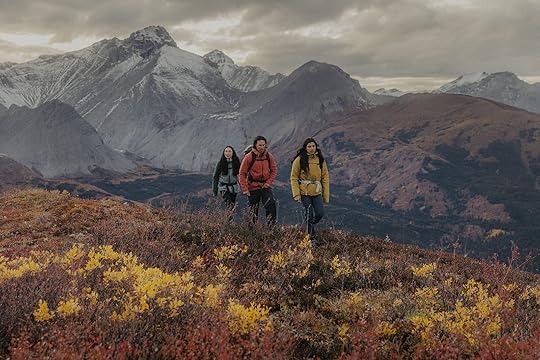
Stell dir die frostigen Gipfel der Bayerischen Alpen und die nebligen Pfade des Schwarzwalds vor, nur auf einer Fläche, die größer ist als ganz Deutschland. Die Luft ist klar, erfüllt vom Duft der Kiefern und der Frische der eiskalten Gletscherbäche. Die Landschaft erstreckt sich, soweit das Auge reicht. Willkommen in The Great Wilderness in British Columbia, Kanada. Ein Ort, an dem Wildtiere frei umherstreifen, indigene Völker das Land seit Jahrtausenden behüten, und jeder Besucher eingeladen ist, die große Harmonie der Natur zu erleben.
Es gibt keinen besseren Ort, um der deutschen Liebe zur Natur freien Lauf zu lassen, als diese enorme Region aus endlosen borealen Wäldern, schneebedeckten Gipfeln und glasklaren Seen. Sich hier in die Wildnis zu begeben bedeutet, die Landschaft in ihrer dramatischsten Form zu erleben und dabei die Gastfreundlichkeit der einheimischen Menschen zu spüren. Das ist deine Chance auf ein episches Abenteuer, bei der du in die nachhaltige Natur British Columbias eintauchen kannst.
Aufbruch in die Weite
Salmon Glacier. Foto: Northern BC Tourism/Andrew Strain
Im Norden von British Columbia ist The Great Wilderness ein Mosaik aus uralten und geschützten Landschaften unter einem Himmel, der sich so weit über die Bergketten wölbt, dass es dein Raumgefühl auf den Kopf stellt. Egal ob du alpine Gipfel erklimmst, in türkisfarbenen Seen schwimmen gehst oder durch idyllische Wälder streifst, es kann sein, dass du tagelang wandern, reiten oder fahren musst, bevor du einer anderen Menschenseele begegnest. Die Stille hier ist mehr als Einsamkeit – sie ist der Atem der Natur.
Eine unvergessliche Route, um sich dieser Wildnis zu nähern, ist die Fahrt auf dem Stewart-Cassiar Highway von Meziadin Junction nach Stewart, einer ehemaligen Goldgräberstadt an der Grenze zu Alaska. Der Bear Glacier und Salmon Glacier, welche beide mit dem Auto erreichbar sind, zählen zu den Highlights der Strecke, sind aber nur zwei von rund 20 Gletschern in der Region.
Auf diesem Streckenabschnitt wirst du viele unberührte Naturlandschaften sehen. Bevor du Meziadin Junction erreichst, lohnt sich ein Übernachtungsstopp im Meziadin Lake Provincial Park – ein perfekter Ausgangspunkt zum Bear Glacier und direkt am Wasser gelegen, so dass du, wie die Grizzlys und Schwarzbären der Region, dein Abendessen selbst aus dem See angeln kannst. Momente wie diese erinnern uns an unseren Platz in der Natur und wie wichtig es ist, The Great Wilderness mit all ihren Bewohnern zu teilen.
Naturwunder hautnah erleben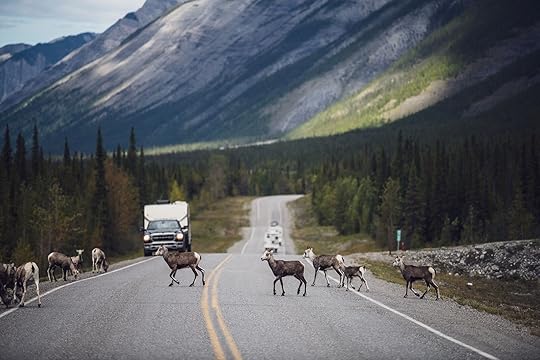
Dall-Schafe überqueren den Alaska Highway. Foto: Northern BC Tourism/Andrew Strain
The Great Wilderness ist nicht nur ein Reiseziel. Sie ist ein Ort, der die Kraft zu verwandeln in sich trägt. Jeder begangene Pfad, jeder See, über den man paddelt und jeder stille Moment in den spektakulären Parks bedeutet mehr als reines Erkunden – wir sind eingeladen, uns hier neu zu erfinden.
Am südlichen Rand von The Great Wilderness liegt der Tumbler Ridge UNESCO Global Geopark und bietet eine Reise in die geologische und historische Vergangenheit der Region. Er beheimatet u. a. ein prähistorisches Riff, das sich im Laufe von Jahrmillionen in beeindruckende Felsformationen verwandelt hat und einen seltenen Einblick in urzeitliche Meereswelten und ihre Lebewesen bietet. Ach ja, und es gibt dort auch 97 Millionen Jahre alte Dinosaurierspuren zu sehen.Der Shipyard-Titanic Trail führt zu einer Reihe von beeindruckenden Felstürmen, darunter die Titanic Formation, die dem legendären sinkenden Schiff ähnelt. Kamera nicht vergessen!
Von Dawson Creek, etwa 1,5 Stunden nördlich, führt der berühmte Alaska Highway in Richtung Yukon. Auf diesem Reiseabschnitt eröffnet sich die strahlende Schönheit einiger der Provincial Parks der Region, wie beispielsweise Charlie Lake und Pink Mountain. Hier kannst du wandern, angeln, paddeln und dich dem Rhythmus der Natur hingeben.
In der Muskwa-Kechika Management Area koexistieren Bären, Bisons, Elche, Karibus, Wölfe, Bergziegen und Vielfraße. Wer noch mehr Wildtiere erleben und gleichzeitig Boot fahren oder an jadegrünen Seen entspannen möchte, sollte den Muncho Lake Provincial Park ansteuern. Auf dem Weg dorthin warten weitere Naturwunder wie die Liard River Hot Springs, eine der größten heißen Quellen Kanadas, versteckt im borealen Fichtenwald kurz vor der Grenze zum Yukon.
Zwischen Wildnis und Menschlichkeit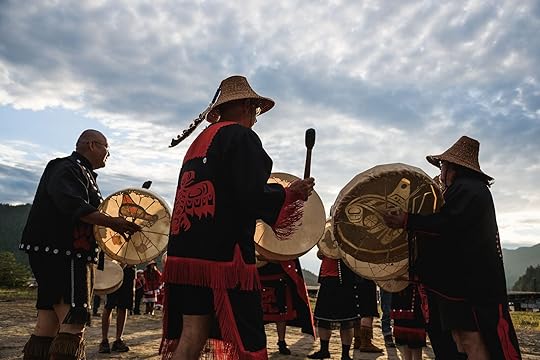
Gitmaxmak’ay Nisga’a-Tänzer und Wii Gisigwilgwelk-Tänzer in Port Edward. Foto: Destination BC/Dave Silver
Und auch wenn The Great Wilderness ihrem Namen schon längst gerecht geworden ist, gibt es noch eine Menge zu entdecken. Die northern British Columbia Route 16 verläuft von Osten nach Westen durch die ganze Region und verbindet die kanadischen Rockies mit dem Pazifik. Im Great Bear Rainforest triffst du auf den weltweit größten Küstenregenwald und auf den Kermode (oder Spirit Bear): Ein Schwarzbär, der aufgrund eines rezessiven Gens weißes Fell besitzt. Wie viele andere Naturwunder, die dir begegnen, wird auch der Spirit Bear von den First Nations als ein Symbol für die tiefe Verbundenheit zwischen Mensch und Natur verehrt.
Um diese Verbindung zu spüren, begib dich am besten auf eine der Mehrtageswanderungen im Mount Robson Provincial Park (der Berg Lake Trail gilt als einer der spektakulärsten in ganz Kanada). Besuch auch den Nisg̱a’a Memorial Lava Bed Park, dessen Felsformationen vor rund 250 Jahren durch den Ausbruch des Mount Tseax entstanden. Für die Nisg̱a’a Nation ist dies ein heiliger Ort: Ein Denkmal an die von der Katastrophe zerstörten Dörfer und die verlorenen Menschenleben, aber auch ein Ort an dem Geschichten von Widerstandsfähigkeit und Erinnerungen erzählt werden. Im Nisg̱a’a Museum kannst du mit indigenen Guides das Land erkunden und seine Bedeutung verstehen lernen.
Die Präsenz indigener Gemeinschaften, etwa der Tlingit, Gitxsan, Nisg̱a’a, Wet’suwet’en, Tahltan, Lheidli T’enneh und Carrier Sekani, macht The Great Wilderness zu etwas Besonderem. Wer in diese Region reist, betritt lebendige Geschichte und entdeckt ein Land mit tiefen spirituellen und kulturellen Wurzeln, das seit jeher behütet wird. In diesen Territorien befindet sich auch eine vielfältige Tierwelt: von Bären, Wölfen, Elchen und Hirschen bis hin zu Adlern, Luchsen und gelegentlich einem Puma. Um das Prinzip der Koexistenz zu verstehen, das The Great Wilderness definiert, kannst du im Dorf Witset am Ufer des Bulkley River Mitglieder der Wet’suwet’en Nation bei traditionellen Lachsfang-Methoden beobachten.
Die Jahreszeiten nutzen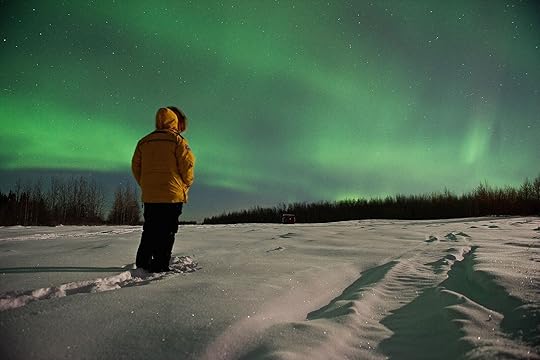
Nordlichter in der Nähe von Fort Nelson. Foto: Northern BC Tourism/Chris Gale
The Great Wilderness ist zu jeder Jahreszeit großartig, aber wer im Winter kommt, erlebt besondere Stille und magische Schneelandschaften. Die Chancen, Nordlichter zu sehen, steigen erheblich. Der Alaska Highway, vor allem rund um Dawson Creek, Fort Nelson und Muncho Lake, bietet die perfekten weiten Landschaften, minimale Lichtverschmutzung und spektakuläre Horizonte für das größte Lichtspektakel der Natur.
So wie die Aurora Borealis British Columbias weiten Himmel zu etwas unvergesslichem verwandelt, lädt The Great Wilderness auch zu einer persönlichen Transformation ein: nicht nur deine Art zu reisen wird sich wandeln, sondern auch deine Sicht auf die Welt an sich. Die Weite bringt Perspektive, Stille bringt Klarheit, Gemeinschaft bringt Menschlichkeit und Schönheit das aufregende Abenteuer. Kurz gesagt: The Great Wilderness ist eine Reise fürs Leben — und all diese ungezähmte Pracht findest du nur einen Flug von Deutschland entfernt. 
Rainforest to Rockies in British Columbia Is Your Gateway to Ever-Changing Landscapes

The coastal, mountainous Canadian province of British Columbia is among the most spectacular places in North America. The sprawling region has an almost unheard-of blend of lush rainforests, mountain canyons carved by eons of water movement, glacier-fed rivers, and snow-capped peaks hiding secret waterfalls. Oh, and if all that wasn’t cool enough, there are volcanoes, too.
For UK travellers, the ever-changing landscapes of BC may evoke scenes familiar to the Alps or Norway’s fjords — but on a simply unimaginable scale. The mountains rise from sea level to more than 13,000 feet, topped with year-round glaciers and bordered by ancient forests where ferns grow shoulder-high. Linking these outdoor wonderlands are stunning drives between places like urban, culture-rich Vancouver, active Whistler, and beyond.
If you’re seeking thoughtful exploration through these dramatic and varied landscapes, the journey along Rainforest to Rockies is perhaps the finest in the province. The full route spans over 435 miles from Vancouver to Mount Robson (the tallest peak in the Canadian Rockies). Along the way, it winds through coastal rainforest, glacial valleys, and canyon country. Each region is distinct, filled with natural wonders, and worth slowing down to appreciate.
From the Pacific views to soaring above sea level
Prince of Whales whale watching tours. Photo: Destination Vancouver/Prince of Whales Whale Watching
Start in Vancouver, where nature is seamlessly woven into city life. With any of Vancouver’s waterfront or downtown hotels serving as a base, travellers can trek along the Seawall to Stanley Park. This biking and walking promenade provides stellar views at every turn, along with a chance to spot curious harbour seals and other marine wildlife. Travellers can also take a free shuttle to walk across the Capilano Suspension Bridge, which hangs 230 feet high above a roaring river canyon.
One of the most unique ways to get to know the natural side of Stanley Park is on a tour that centers the First Nations perspective, like those from Indigenous-owned Talaysay Tours. The daily Talking Trees tour helps guests learn how Indigenous Peoples have lived off the land around Vancouver for millennia.

Sea-to-Sky Highway near Horseshoe Bay. Photo: Destination BC/Hubert Kang
As visitors leave the city behind, the Sea to Sky Highway (Route 99) delivers jaw-dropping scenery almost immediately. The road hugs the edge of Howe Sound, with never-ending views of mountains plunging into emerald-hued waters and bald eagles soaring overhead.

Sea to Sky Gondola. Photo: Destination Vancouver/Sea to Sky Gondola/Paul Bride
In Squamish, the Sea to Sky Gondola carries visitors high above the valley floor, offering views of Howe Sound — the most southerly fjord in BC — and alpine ridgelines with minimal effort. At the summit, a walk across the Sky Pilot Suspension Bridge adds a thrilling perspective, with panoramic vistas in every direction. It’s one of the best spots to take in the region’s beauty, with dramatic summits like Mount Garibaldi and Black Tusk — two iconic peaks reminiscent of Europe’s Alps — showing just how wildly the terrain can shift between lush valleys and jagged mountains. Note: An expert-level hiking trail is also accessible for those wanting to stretch their legs after a long flight and the start of an epic drive.
Squamish’s lively charm — paired with eight provincial parks, craft breweries, and artisan bakeries and coffee shops — makes it an ideal stop for at least one evening. For a rainy afternoon, the nearby Britannia Mine Museum provides a chance to enter a former working mine and see how the industrial heritage buildings have been modernized and restored.
From the ultimate alpine town to a cultural hub
What We Treasure tour at Squamish Líl̓wat Cultural Centre. Photo: Squamish Líl̓wat Cultural Centre/Logan Swayze
The landscapes shift again as the journey climbs into the alpine town of Whistler. Known for world-class skiing in winter, autumn in Whistler means meadows surrounded by autumnal hues, evergreen forests with carpets of moss, and hiking and walking trails for every ability level. Whistler Village is polished yet outdoorsy, and visitors can enjoy high-elevation hikes, gourmet tasting menus, and organic spa services — often all in the same day.
Travellers from the UK will want to allocate a few days to Whistler, especially as the town has some of the best fine-dining and spas outside of Vancouver, including the amazing Scandinave Spa — ideal for hot- and cold-plunge sessions after a day spent outdoors.
Importantly, Whistler lies on the traditional land of the Sḵwx̱wú7mesh Úxwumixw (Squamish Nation) and Líl̓wat Nation, and their cultures are beautifully represented at the architecturally stunning Squamish Líl̓wat Cultural Centre, whose design is a contemporary take on First Nations structures.
Beyond Whistler, the route turns inland, trading lush rainforest for the rolling hills and semi-arid canyons of interior BC. Whistler to Kamloops is about a four-hour drive, making midway-point Marble Canyon Provincial Park an excellent detour. The canyon’s mineral springs and unique rock formations are a reminder that, popular as it is, Rainforest to Rockies rewards those who slow down and step off the main road. In Kamloops, where two rivers meet in a broad valley, you’ll find a town dotted with galleries and opportunities for farm-to-table dining. The transformation of the landscape since leaving Vancouver is striking — what began as rainforest is now punctuated by rolling hills, grassy plains, and wide-open terrain, highlighting the astonishing diversity in BC.

Scenic view of Downtown Kamloops. Photo: Destination BC/Tanya Goehring
Towns like Squamish, Whistler, and Kamloops are popular with tourists (though still far less crowded than a city). But part of their appeal lies in their role as hubs for exploring the many natural landscapes of BC, of which there are many. It’s possible to link towns by car in no time — Whistler and Squamish are less than an hour apart — but every few minutes, you’ll find a new trailhead, turnoff, or viewpoint. It’s worth leaving yourself several unhurried days to make the drive from the rainforest to the Rockies, especially so you can experience an evening or two in each town.
From waterfalls and volcanoes to epic peaks
Helmcken Falls. Photo: Destination BC/Max Zeddler
Travellers looking to escape city life will love Clearwater, especially as the small town is the gateway to Wells Gray Provincial Park. It’s a vast wilderness playground of waterfalls, mineral springs, and extinct volcanoes, best described as raw and untamed. Here, Helmcken Falls plunges more than 450 feet into a misty gorge and is certainly the main draw, but dozens of other cascades and picturesque trails meander through the rugged Cariboo Mountains, past jagged peaks and steep canyons, and into fir and spruce forests.
After visiting Clearwater, wildlife surprises abound, from bears to bighorn sheep, as you travel toward one of the most impressive natural features in BC: Mount Robson. It’s a towering, glacier-clad peak that rises roughly 10,000 vertical feet above the valley floor. Even by Alpine standards, its scale is staggering.

Hiking in Mount Robson Provincial Park. Photo: Destination BC/Megan McLellan
Unlike the busier walks and towns of the French or Italian Alps, Mount Robson’s surrounds are remote and uncrowded — and home to massive hanging glaciers and thundering waterfalls. Fit hikers can climb Mount Robson in two days, but with so much beauty along the trail, from waterfall-filled canyons to wildflower-covered meadows, you’ll want to take your time (and lots of photos).
From Mount Robson, you can loop south through the Fraser Canyon back to Vancouver, with more chances to stop at historic towns, wineries, and mountain hot springs along the way. However you choose to wrap up your trip, brace yourself: Rainforest to Rockies packs in more scenery and cultural experiences than you might’ve encountered in a single region ever before — and that can make flying home after your epic BC trip pretty darn tough. 
Reise Durch Den Birthplace of Adventure in British Columbia
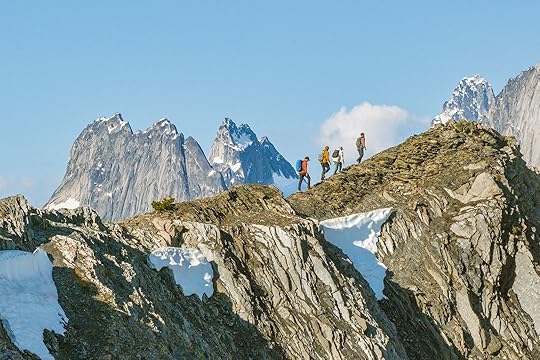
Manche Orte schreien einfach nach Abenteuer. Zwischen den endlosen Gipfeln der Kanadischen Rocky Mountains und den Monashee-, Selkirk- und Purcell-Bergen ist der Südosten British Columbias ohne Frage ein Teil davon. Man könnte ihn sogar als Birthplace of Adventure, den Geburtsort des Abenteuers, bezeichnen.
Mehr als 60 Provinzparks und vier Nationalparks bilden die Bühne für Outdoor-Erlebnisse sowie für einige der eindrucksvollsten Landschaften Kanadas. Gletscher gespeiste Flüsse, smaragdgrüne Seen und dichte Wälder laden dazu ein, in die Abenteuer-Tradition dieser Region einzutauchen: ob beim Mountainbiken in Fernie, Kajakfahren auf dem Kootenay Lake oder Wandern rund um die Bergstädte Nelson, Golden und Revelstoke. Ganz allein ist man dabei selten – vor allem wenn man Wildtiere wie Elche, Weißkopfseeadler, Hirsche und Rehe mitzählt – doch von Menschenmassen ist man hier immer weit entfernt.
Im Sommer erwacht der Birthplace of Adventure so richtig zum Leben: Klarer Himmel, lange Tage und Temperaturen zwischen 20 und 30 Grad schaffen die perfekte Kulisse für ganztägige Erkundungen. Alle Parks sind geöffnet, und die Orte locken mit Bauernmärkten, sog. Farmer’s Markets, Musikfestivals und anderen lokalen Events.
Im Herbst wird ein neues Kapitel aufgeschlagen, das Ruhe und landschaftlichen Szenenwechsel verspricht. Die Wälder mit ihren sich verfärbenden Blättern werden dann noch fotogener. Kühleres Wetter und die klare Luft machen diese Jahreszeit ideal zum Wandern. Weniger Besucher bedeuten ruhigere Wanderwege und aktivere Wildtiere. . Und obendrein ist Herbst Erntezeit – ideal, um bei Weingütern und Apfelweinkeltereien vor Ort vorbeizuschauen und saisonale Produkte zu genießen.
Wenn der Winter kommt, verwandeln sich die Bergorte in schneebedeckte Spielwiesen und sind Ausgangspunkte zu weltbekannten Ski- und Snowboardgebieten. Der Südosten British Columbias ist auch ein Hotspot für Heli- und Catskiing. Hier wird klar, dass die Pulverschnee-Saison im Birthplace of Adventure nicht nur für gutes Adrenalin sorgt, sondern auch für eine einzigartige Atmosphäre. Vom klaren Gebirgsmorgen bis zu langen Tagen voller Abfahrten auf Neuschnee bietet der Winter hier ein unverfälschtes Pulverschnee-Erlebnis, das zu Recht berühmt ist.
Wann immer du kommst, mach dich bereit für wahre Abenteuer in einem Reiseziel der Weltklasse, das viele Deutsche möglicherweise noch gar nicht auf dem Radar haben.
Starte dein British Columbia-Abenteuer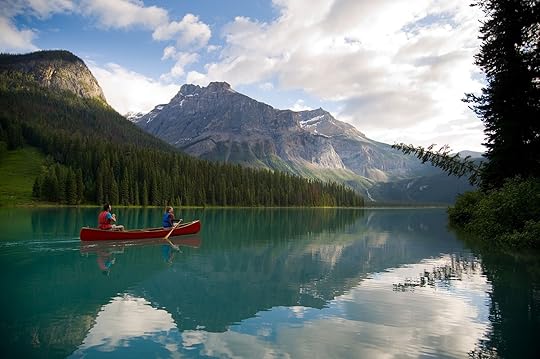
Emerald Lake im Yoho National Park. Foto: Destination BC / Dave Heath
Die Berge in der Birthplace of Adventure sind nicht nur eine Kulisse,sie sind eine Lebensart. Deshalb sind die Canadian Rocky Mountain Parks – ein UNESCO-Welterbe, das vier National- und drei Provinzparks umfasst – der perfekte Ort, um die Gegend kennenzulernen und deinen Adrenalinspiegel anzukurbeln.
Beginne Deine Entdeckungstour im Yoho National Park, wo Wasserfälle tosen, Gletscher glitzern und die Bergpanoramen spektakulär sind. Zu den eindrucksvollsten Sehenswürdigkeiten zählen die Takakkaw Falls, einer der höchsten Wasserfälle Kanadas, sowie der smaragdgrüne Emerald Lake, der den idealen Ort zum Paddeln umgeben von Berggipfeln bietet. Für Wanderer ist der Iceline Trail ein herausfordernder, lohnenswerter Hochgebirgswanderweg mit grandiosen Ausblicken auf die Gletscher Daly und Emerald. Aufgrund der anhaltenden Schneelage nimmt man den Trail am besten zwischen Mitte Juli und Mitte September in Angriff. Der Yoho National Park bietet zudem ein weit verzweigtes Netz an gut zugänglichen Tageswanderungen und geführten Touren durch das entlegene Hinterland, die eindrucksvoll die vielfältigen Landschaften des Parks zeigen, von Wildblumenwiesen bis hin zu dramatischen Schluchten. Wanderwege wie Laughing Falls, Sherbrooke Lake und Hamilton Falls offenbaren die ruhigeren Ecken des Nationalparks.
Die Kleinstadt Golden, ein idealer Ausgangspunkt für sechs Nationalparks (darunter Yoho) und zwei geschichtsträchtige Flüsse, ist der perfekte nächste Halt für alle, die Rafting, Mountainbiken oder Bergwanderungen lieben. Direkt außerhalb der Stadt lockt das Kicking Horse Mountain Resort als “Basecamp” für Abenteuer. Begib dich auf Gratwanderungen über drei Gebirgszüge, bewältige mit dem Mountainbike über eintausend Höhenmeter oder buche eine Wildwasser-Raftingtour auf dem Kicking Horse River.
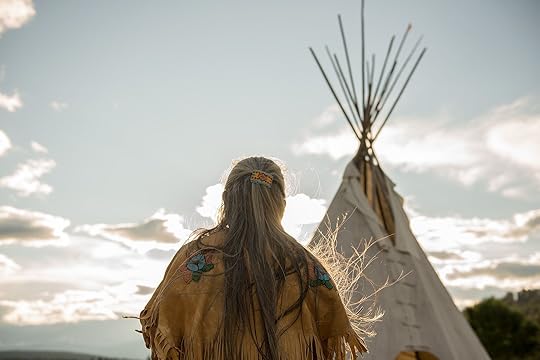
Ktunaxa-Ältester im St. Eugene Golf Resort. Foto: Destination BC / Kari Medig
Südwärts durch den Birthplace of Adventure geht die Reise weiter mit Biking, Hiking und Kleinstadtcharme. In Cranbrook angekommen, einer der größten Gemeinden der Region, trifft Outdoor-Abenteuer auf Kultur und historische Sehenswürdigkeiten. Besuche das St. Eugene Golf Resort & Casino der Ktunaxa Nation und erlebe einen Ort, der das Engagement der Gemeinde in punkto wirtschaftliche Entwicklung und Weitergabe ihrer Kultur widerspiegelt. Das Resort umfasst eine luxuriöse Unterkunft, einen Meisterschafts-Golfplatz und ein Interpretive Centre, das den Gästen nicht nur eindrucksvoll die Geschichte und Traditionen, sondern auch die fortwährende Präsenz des Volkes vermittelt.
Cranbrooks Geschichte ist auch von der Eisenbahn geprägt. Einst ein wichtiger Knotenpunkt der Canadian Pacific Railway, bewahrt die Stadt diesen Teil der Geschichte durch Attraktionen wie das Cranbrook History Centre, in dem restaurierte historische Eisenbahnwaggons und Ausstellungsstücke davon erzählen, wie die Eisenbahn dem Südosten von British Columbia die Welt eröffnete.
Am Ende dieser Etappe der Reise wartet Fernie, eine kreative Outdoor-Stadt, eingerahmt von schroffen Gipfeln. Hier ist Mountainbiken angesagt,zumindest wenn man nicht gerade die entspannte Atmosphäre des Bergortes genießt. Im Winter verwandeln Unmengen an leichtem, pulvrigem Schnee, der hier übrigens “Powder” genannt wird, die Berge in ein Paradies für Skifahrer, und Orte wie Fernie und Golden heißen Winterabenteurer willkommen.
Zwischen den Gipfeln im Columbia Valley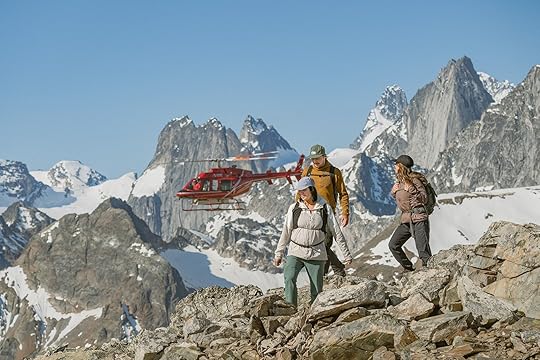
Heliwandern in den Bugaboos. Foto: Destination BC / Reuben Krabbe
Eingefasst von den Purcell Mountains im Westen und den Rockies im Osten, ist das Columbia Valley eine faszinierende Landschaft, die durch den gewundenen Columbia River und die weitläufigen Columbia Wetlands geprägt ist, die reichhaltige Ökosysteme und eine vielfältige Tierwelt beherbergen. Diese Gewässer sind seit jeher zentrale Reisewege, Treffpunkte und Nahrungsquellen für indigene Völker, die ihre spirituelle und kulturelle Verbundenheit mit Land und Wasser bis heute bewahren.
Für Besucher gibt es zahlreiche Möglichkeiten, diese Landschaft zu erleben: Durch einen Sprung ins Wasser oder eine Kanutour am Lake Windermere, ein Bad in den entlegenen, heißen Quellen des Whiteswan Lake Provincial Park oder eine Paddeltour auf dem Dutch Creek, vorbei an Wäldern und Ackerland.
Erreiche ungeahnte Höhen auf einem Helikopterflug zur CMH Bugaboo Lodge in den Bugaboos, dem Geburtsort des Heliskiings und seit über hundert Jahren Anziehungspunkt für Bergsteiger und Abenteurer. Die heißen Quellen rund um den Kootenay National Park laden zum Entschleunigen ein. Tauche ein in die natürlichen Mineralbecken von Radium Hot Springs, umgeben von hoch aufragenden Canyonwänden. Erkunde Wahrzeichen wie die Paint Pots, eine Gruppe farbenfroher, von Quellen gespeister Teiche und eine heilige Stätte für das Volk der Ktunaxa. Schnüre später deine Wanderschuhe und wirf einen Blick auf die beeindruckenden Kalksteinformationen im Marble Canyon.
Nur 15 Minuten südlich vom Park kannst du in Invermere am Lake Windermere heiße Quellen gegen kühles Wasser tauschen. Geh paddeln, Kajak fahren oder schwimmen und mache anschließend einen Stadtbummel zu Boutiquen und Cafés oder genieße Live-Musik auf einem der Sommerfestivals. Von Invermere aus kannst du weiter in Richtung Süden zum Dutch Creek fahren, wo du ruhigeres Paddelwasser findest, oder in den Whiteswan Lake Provincial Park, wo die Seen Whiteswan und Alces dazu einladen, auf Forellen zu angeln oder ein Kanu zu Wasser zu lassen. Dichte Wälder und gewundene Flüsse machen diesen Abschnitt ideal für alle, die eine tiefere Verbindung zur Natur suchen.
Hier liegen auch die Columbia Wetlands, das größte intakte Feuchtgebiet in Nordamerika und eines der charakteristischen Merkmale des Columbia Valley. Der 180 Kilometer lange Abschnitt des Columbia River — von Canal Flats bis nach Donald, nördlich von Golden — beherbergt über 260 Vogelarten und ist ein wichtiger Anlaufpunkt für Zugvögel. Paddel durch spiegelglatte Kanäle, nimm an einer geführten Eco-Tour ab Invermere, Golden oder Fairmont Hot Springs teil – und komm zur Ruhe.
Verbinde Kultur & Abenteuer in den Kootenays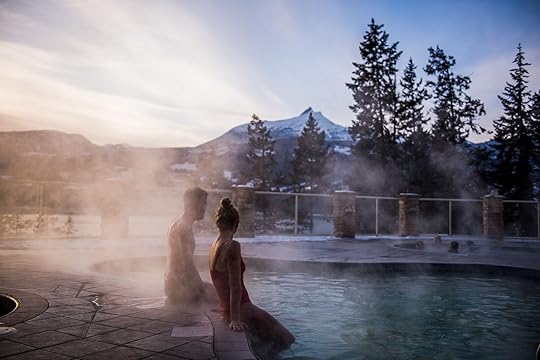
Halcyon Hot Springs. Foto: Destination BC / Kari Medig
Die Kootenays sind ein essentieller Teil des Birthplace of Adventure, geprägt von den verschiedenen Charakteren der hiesigen Städte. Einen guten Einstieg bietet Revelstoke, wo sich alpine Action mit künstlerischer Sensibilität vermischt. Bekannt für ihre Bike-Trails und die wachsende Kreativszene, ist sie eine natürliche Brücke zwischen der Berglandschaft und den Menschen, die sie ihr Zuhause nennen.
In Nakusp laden wohltuende heiße Quellen dazu ein, inmitten der Natur zu entspannen – mit ruhigem Blick auf von Bäumen gesäumte Seen.. Oder vielleicht steuerst du Kaslo auch direkt an, ein malerisches Dorf am Kootenay Lake, wo ein außergewöhnliches Museum auf dich wartet: SS Moyie, der älteste intakte Passagier-Heckraddampfer der Welt.
Wer in den Kootenays unterwegs ist, sollte Nelson unbedingt auf seiner Liste haben. Die Stadt ist das kulturelle Herz der Region: Restaurierte denkmalgeschützte Gebäude aus dem 19. Jahrhundert, Boutiquen, Kunstgalerien, Bio-Cafés und Craftbeer-Brauereien machen es zu einem Zentrum der Kreativität und Gemeinschaft. Ob du auf dem Farmer’s Market stöberst oder im Stadtzentrum Live-Musik genießt, vielleicht solltest du eine Weile bleiben, um die ungewöhnliche Atmosphäre zu genießen.
Wenn du dich für die Weiterreise entscheidest, solltest du einen Stopp in Castlegar in Betracht ziehen. Hier prägt der Zusammenfluss der Flüsse Columbia und Kootenay die Landschaft und den Lebensstil. Oder vielleicht besuchst du Creston, umgeben von Obstgärten, Weinbergen und Feuchtgebieten. Plane letzteres wenn möglich am besten zur Erntezeit im Sommer und Herbst ein: Weingüter, Farmers’ Markets und ruhige Landstraßen laden zu einem letzten idyllischen Abstecher vor der Heimreise ein.
Endlose Bergketten formen im Birthplace of Adventure raue Landschaften, in denen die Leidenschaft für Outdoor-Abenteuer tief verwurzelt ist. Sommer und Herbst sind perfekte Jahreszeiten, um erstklassiges Wandern, Paddeln und Biken zu erleben sowie die Bergstädte, welche diesen Teil von British Columbia so einzigartig machen. Der Winter bringt Pulverschnee satt, echtes Skistadt-Flair und lädt Dich ein, diese Jahreszeit mit gleicher Begeisterung zu genießen. Komm wegen der Pisten, bleibe wegen der Kultur und sieh selbst, warum das Birthplace of Adventure so viele Generationen dazu inspiriert hat, die Lebensweise in den Bergen zu schützen und zu schätzen. 
September 19, 2025
One of the World’s Top Spots for Great White Sightings Has a Problem: No Great Whites

A majestic 13-foot great white shark emerged from the depths, drawn by the bait on the surface. Its impressive teeth, piercing gaze, dorsal fin, and swift movements reminded me of everything that scared viewers in the film Jaws, made popular 50 years ago.
Though the shark could sense my adrenaline in the water from inside the cage, the famous predator isn’t really interested in our species. In the real world, sharks are far less interested in humans compared to other species, contradicting Steven Spielberg’s depiction (and Peter Benchley’s famous novel).
In South Africa’s waters just a few years ago, an experience like mine of seeing white sharks in the wild in their natural habitat was possible daily, and multiple times per day. Now, it’s becoming less frequent. A 2024 study from the Oceans Research Institute showed a 90 percent loss of tracked white sharks between 2019 and 2024.
Because of this, the wildlife tourism industry had to reinvent itself, creating a new, broader marine experience. Simultaneously, it created a global call for environmental action to protect sharks, much like the push to save African rhinos that gained global attention in the 1990s.

A white shark as soon through a diving cage in South Africa. Photo: Holger Kirk/Shutterstock
The answer, sadly, may be nowhere. White sharks may just be disappearing. That’s the sense tour operators and conservationists have in places like Gansbaai Village and False Bay, both well-known coastal locations for shark cage diving near Cape Town, where the Atlantic and the Indian oceans merge.
Biologists have reported going from 15 to 20 white shark sightings on a daily basis to counting on sheer luck to catch sight of just one the whole day. That’s the experience shared by Mary Rowlinson, marine biologist at the Shark and Marine Research Institute, in the 2024 documentary The Last Shark. The documentary warns of the decreasing Carcharodon carcharias (white shark) numbers, and set off alarm bells in the scientific community for the speed at which it suggested numbers are dropping.
What caused such a sharp decline in the great white shark population in the area? Many threats, but the most often cited are illegal fishing and the controversial setting of shark nets and drumlines. The latter are devices put in water to reduce the probability of shark attacks, which have been placed around the beaches of KwaZulu-Natal region for decades. It’s a strategy called the “bather protection program.”
Because of this, the South African great white shark cage diving industry had to look for a different approach. “We immediately shifted our marketing from ‘white shark cage diving’ to simply ‘shark diving,’” says Wilfred Chivell, managing director of Gansbaai-based Marine Dynamics. “This change helps highlight the variety of shark species our guests can encounter, rather than focusing on just one.”
The majority decided to come clean and stressed that, in spite of this phenomenon, other shark species are still present in large numbers, like Carcharhinus brachyurus — the bronze whaler shark. And they emphasize that while finding white sharks is the goal, it’s not always a reality.
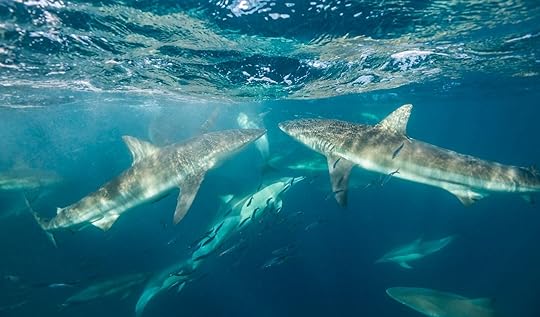
Bronze whaler sharks and dolphins feeding on sardines in South Africa. Photo: wildestanimal/Shutterstock
Is adaptation enough to keep the shark diving industry alive? Not entirely, according to some local operators. Excursion bookings dropped drastically between 2014 and 2024, says Samantha Hansen, managing director of the Shark and Marine Research Institute. “Across the industry, we estimate there’s been a 20 to 30 percent drop in bookings over the past few years,” she says.
While COVID is partially to blame, she says the decline in white shark sightings also played a major role. She also points to illegal fishing, poor protection in marine reserves, and “outdated practices” like shark nets and drumlines. Natural predation by orcas also played a role, like the now-famous Port and Starboard: a pair of adult male orcas notable for preying on great white sharks off the coast of South Africa.
Hansen is also the marketing director at White Shark Diving Company, a leading shark diving tour operator in Gansbaai. She estimates that in the absence of great white sharks, they lose about 50 confirmed bookings per year when potential guests “learn about the decline in white shark sightings during our pre-trip correspondence.”
“We choose to be fully transparent and manage expectations early, so visitors don’t feel misled,” she says. “Thankfully, many travelers remain incredibly supportive and still choose to join us.”
It’s clear from both Chivell and Hansen that the solution has to be two-fold: orienting the cage dive offerings to a broader, more educational and ecological approach, while also putting strong pressure on the government and public to preserve these amazing animals, which are, above anything else, essential in the ecosystem.

Tourists entering a shark cage in South Africa. Photo: Nico Calandra/Shutterstock
Chivell also provided his insight on the sharks’ decline. “In 2016, the industry took out around 85,000 people on shark cage diving trips,” he says. “By 2024, that number had dropped to about 28,000, mainly because of the misconception that we have no sharks.”
Hansen echoes the thought that there are still plenty of other sharks left to see. “Bronze whaler sharks often arrive in schools and are highly curious and interactive,” she says. “They’ve provided us with truly unforgettable diving encounters, alongside broadnose sevengill cow sharks, and many other fascinating marine species.”
Chivell agrees that many visitors “are blown away and leave with a deep appreciation” of the wildlife in general. That’s even true for travelers from the United States, who are often “influenced by Discovery Shark Week” and are “focused on seeing white sharks specifically.” Each tour from Marine Dynamics also includes a visit to the area’s African Penguin and Seabird Sanctuary, where guests learn about seabird conservation and rehabilitation.

Beachgoers at Gordon’s Bay, on South Africa’s False Bay. Photo: Ahturner/Shutterstock
The documentary The Last Shark exposes the dark side of nets and drumlines installed since 1952 on the tourist beaches of KwaZulu-Natal. In the documentary, one activist refers to them as “curtains of death.” Between 1978 and 2000, shark nets along South Africa’s beaches killed 28,687 large sharks, plus thousands of rays, dolphins, turtles, and whales. This destabilized the marine ecosystem and at the heart of South Africa’s marine tourism.
Some tour operators, researchers, and activists put blame on the KwaZulu-Natal Sharks Board (KZNSB), which is responsible for the “bather protection program,” which uses nets and drumlines to reduce human-shark encounters. “The Sharks Board remains resistant to change, largely tied to financial interests,” Hansen says. She’d like to see the board make changes, but it would have a cost. “Shifting away from that model would mean redirecting resources into testing and implementing modern, non-lethal alternatives.”
Chivell agrees the nets and drumlines are a problem, saying “blaming the two orcas oversimplifies the situation. Our sharks are being brutally caught in outdated nets and drumlines. More than 1,000 white sharks have been killed in these nets over the years.”

Shark nets are put just below the waterline to prevent sharks from entering designated swimming areas (as shown here in Australia). Photo: John Carnemolla/Shutterstock
But the official story fully contradicts that view. In a statement for this story, Matt Dicken, acting head of research for KZNSB, says he believes research that points to orcas for keeping other species away. He also notes this is primarily an issue in the Western Cape, but not necessarily in other areas of South Africa.
Dicken claims that protection devices have “reduced the incidence of unprovoked shark attacks” in KwaZulu-Natal. It’s a program he describes as vital, as beach tourism is a major draw in the region. The bather protection programs “provide public confidence in beach safety,” he says.
Activists have proposed other ways to keep beaches safe, such as surveillance with binoculars, automatic drones, acoustic receivers, and electric deterrence. Dicken says the Sharks Board “is constantly investigating the potential to use any non-lethal alternates,” but that none are suitable for use along the region’s coasts.

Photo: Wirestock Creators/Shutterstock
Those who travel to South Africa can get involved in protecting great white sharks, part of the country’s natural heritage at risk of disappearing as we know it.
The most accessible way to be part of the solution, from anywhere on the planet, is to join a campaign for change. A petition launched collaboratively in late 2023 by a coalition of concerned organizations and citizens demands more sustainable alternatives of protection than shark nets and drumlines.
Another option is to become a volunteer with shark research in Cape Town, a program targeted to students and researchers but open to anyone. The research and conservation program receives between 50 and 60 international collaborators a year, mainly from the US, United Kingdom, Europe, and Brazil, as well as South Africans. Volunteers work with biologists to tag and monitor species, clean beaches, and support the scientists’ studies. You don’t need previous experience, just passion for the ocean and its diversity.
Choosing to dive with licensed companies that don’t use harmful baiting techniques, such those mentioned in this article, also makes a difference and helps fund shark protection. Baiting is controversial, since it can change the sharks’ normal feeding behavior and teach them to associate humans with food — one of many reasons to choose reputable shark tourism options.
Here’s a quick way to decide: if the company seems to push a certain shark sighting over and above teaching its guests about marine ecology and conservation, take that as an alert sign. As it so often is, the fate of these vulnerable ecosystems relies on responsible travel. That moment of awe in the cage means little if the species vanishes. The fate of these controlled encounters depends in part on how much travelers who care about the species chip in. 
Where to Play, Eat, and Stay in Marquette, Michigan
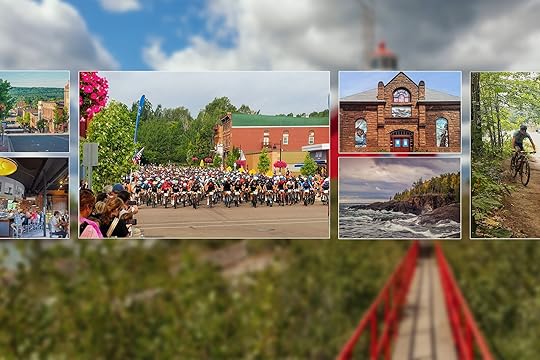
The first thing you’ll notice on your way into Marquette, Michigan, is the forest. Miles and miles of thick, verdant forests surround the city on three sides, and they’re crisscrossed and shot through with hundreds of miles of trails to explore. On the east side, Lake Superior provides a watery playground for a variety of outdoor activities, while Marquette at large is a veritable paradise for outdoor enthusiasts. With a history rich in iron ore and the machines made from it, Marquette was forged in iron and tempered by the lake.
Its location on Michigan’s Upper Peninsula, only 82 miles from the Canadian border, provides Marquette with a snowy winter and a warm summer, and the city has activities to correspond with each. In winter, you have skiing (both cross-country and downhill), fat biking, and snowshoeing. When the weather is nicer, these same trails can be enjoyed on a mountain bike, with your running shoes, or to watch the birds or seek out waterfalls. There’s even climbing to be done, on either winter ice or summer rock.
The people of Marquette know how to throw a party — particularly if the kind of party you enjoy starts with some monstrous endurance event, like a 48-mile mountain bike race or a 50-mile ultra-running race, and ends with live music, good food, and locally brewed beer. The area hosts many exciting events throughout the year that take advantage of the extensive trail system. And, for when you’ve finished your romp through the woods, Marquette has at least six brewpubs — and a distillery — within the city, and several more in nearby towns. Marquette also has the Downtown Social District, a designated area encompassing the two main entertainment streets where it’s legal to bring your drink out of the bar or restaurant.

Photo: Craig Benson
My visit to Marquette coincided with the Honor Credit Union Ore to Shore Mountain Bike Epic. Ore to Shore has six separate races, from a 0.5-mile kids’ race up to the big 48-mile Hard Rock. It’s practically a whole festival, and there’s even a family competition that combines results from different races and age groups and comes with an actual cash prize for the fastest family. This year, the 26th running of the race had over 2,500 total competitors and was supported by extensive involvement from the local community. In addition to the public trails and roads, the routes traverse 60 privately owned lands, with permission from all landowners. Over 400 volunteers from local communities ensure a smooth event, and partner organizations, like Start the Chain and Noquemanon Trail Network, provide finish line services.
I didn’t get to race, but I definitely had FOMO when I saw the camaraderie and fun the racers were having. I caught the exciting start of the 48-mile Hard Rock in the historic mining town of Negaunee and then made my way to the Forestville railroad crossing aid station, where I was just in time to cheer for the intrepid tail end of the 28-mile Soft Rock race. The small lead pack of elites for the Hard Rock came through so fast that I couldn’t even get my camera out in time. Finally, I ended up at the big party that was the finish area.
I’d suggest that the best way to visit Marquette is to pick one of the big races or festivals and plan your vacation around the event. Watch the regional elite athletes compete, or compete yourself, and spend the rest of the week exploring the area with your chosen sport. Or if you’re like me, mix it up and do all the sports.
Things to do in MarquetteTake a historical lighthouse tour
Photos: Craig Benson and Craig Sterken/Shutterstock
The Marquette Maritime Museum is housed in an old city waterworks building and is full of information about the long history of shipwrecks on Lake Superior and corresponding lifesaving innovations. A couple of highlights for me were hearing a recording of the last radio transmission made by the captain of the Edmund Fitzgerald (the largest and most famous ship to sink in the Great Lakes) and looking out over Marquette Bay with a periscope.
The lighthouse tour begins and ends in front of the museum. It takes you on a short walk, past the Coast Guard station, the lifesavers’ barracks next door, and into the lighthouse. You’ll learn about the history of lifesaving in Marquette, who really invented the first outboard motor, the foghorns that were surreptitiously blown up by the coast guard (thereby raining bricks all over the town), and, of course, the lighthouse itself.
Marquette Maritime Museum: 300 N. Lakeshore Blvd, Marquette, MI 49855
Visit the Marquette Regional History Center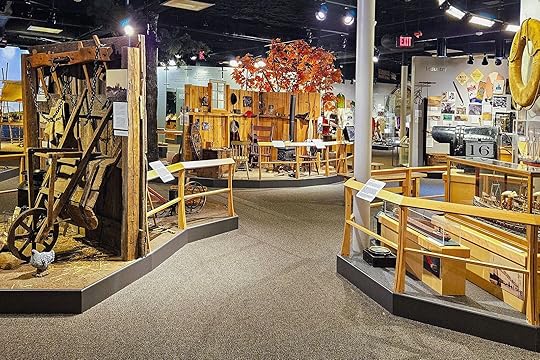
Photo: Craig Benson
Modern-day Marquette history — that’s to say Western European history — begins around 1844 with the discovery of iron ore deposits, which are still mined to this day. The area is known as Gichi-namebini Ziibing by the Anishinaabe Council of Three Fires, a confederacy of three Indigenous tribes: Ojibwe (or Chippewa), Odawa (or Ottawa), and Potawatomi. All of this you can learn in the extensive exhibits of the Marquette Regional History Center.
Marquette Regional History Center: 145 W. Spring St, Marquette, MI 49855
Play in Presque Isle Park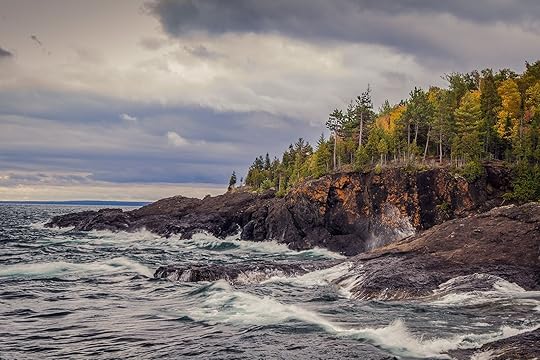
Photo: ehrlif/Shutterstock
Presque Isle Park (presque means “almost” in French, as in, it’s almost an island) is a heavily forested 323-acre bulb of land that juts out into the lake, providing opportunities for fishing, hiking, birdwatching, biking, sunset watching, and, my favorite, jumping off the 20-foot high Volcanic Black Rocks into the lake. There’s a single-lane, one-way road that loops through the park, but you should note that it’s regularly closed to vehicles, whether to prioritize walkers, due to snow, or for the spring blue spotted salamander migration.
Presque Isle Park: Peter White Dr, Marquette, MI 49855
Hike a local vista trail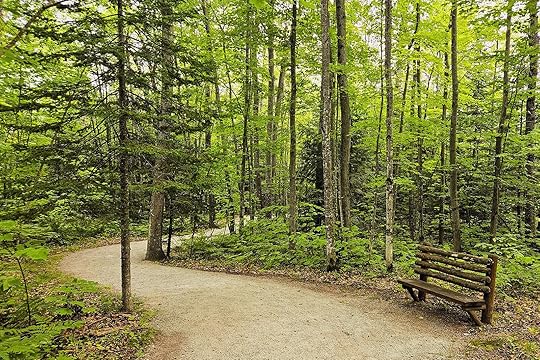
Photo: Craig Benson
There’s a huge range and variety of hiking options around Marquette, from the Fit Strip (a 1.6-mile lighted hiking/biking/skiing trail inside the city) to the 4,800-mile North Country Trail that passes through Marquette — and everything in between. The morning of my first day, I decided to watch the sun rise over Lake Superior from the top of Mount Marquette, which can be reached by driving right up next to the observation platform or hiking a 3.7-mile loop trail beginning at the NTN South Trails Trailhead.
On my second day, I drove out to the Thomas Rock Scenic Overlook, which is about a 30-minute drive from Marquette and deep in the forest. The hike from the parking lot was a half-mile of easy walking on a wide, well-maintained path, dotted with plant identification markers. The overlook is a large cement platform, complete with coin-operated binoculars, that looks out over Independence Lake and beyond to Lake Superior.
Mount Marquette Loop: Cliff Power Rd, Marquette, MI 49855
Thomas Rock Scenic Overlook: Big Bay, MI 49808
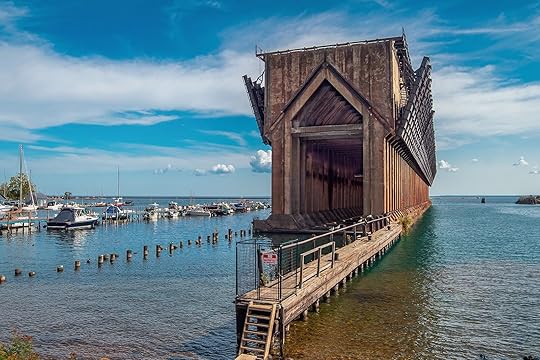
Photo: Gerald A. DeBoer/Shutterstock
Marquette’s history is tightly linked to iron ore, and the most striking representations of that industry are the ore docks. The Lower Harbor Ore Dock is massive: 969 feet long, 85 feet high, and 68 feet wide, constructed mostly of steel and concrete. Iron ore is mined inland, transported by rail to the shore, and then transferred to ships via the ore docks. The Upper Harbor Ore Dock on the north side of the city is still in use, while the unused Lower Harbor Ore Dock is a keystone of a plan to create a sustainable community center that preserves local history and is currently used as a background for fireworks and laser shows. The waterfront adjacent to the ore dock includes docks for private boats, a sailing school, a walking pier, and the “Seven Grandfather Teachings” sculpture.
Lower Harbor Ore Dock: City Multi Use Path, Marquette, MI 49855
Take a guided kayak tour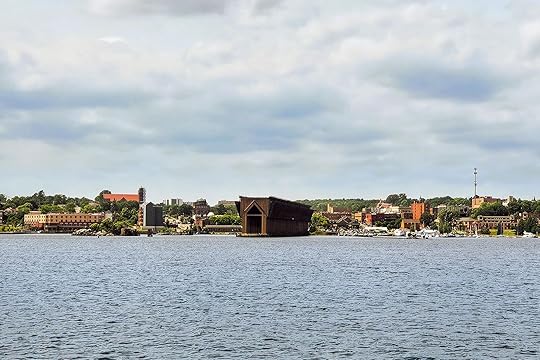
Photo: Craig Benson
The lake can be as much of a playground as the forest. While Lake Superior can be temperamental (thinking about the Edmund Fitzgerald), when it’s calm, it’s perfect for kayaking. Try a guided tour around Presque Isle. You’ll learn about local history, see hidden sea caves, and view the black rock cliffs from a different angle. You’ll paddle through crystal clear waters while enjoying the natural beauty of Presque Isle.
Marquette Mountain Resort Kayak Tours: 4501 M-553, Marquette, MI 49855
Mountain bike through the forest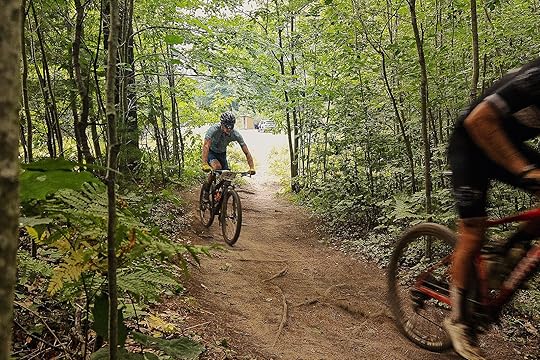
Photo: Craig Benson
Your options for mountain biking are virtually unlimited in Marquette. If downhill is your thing, Marquette Mountain Resort sheds its wintery skin as a ski resort and becomes a mountain biking playground in the warmer months. With eight miles of trails and a range of difficulty from beginner to expert, and with the lifts ferrying you to the top of the runs, Marquette Mountain can satisfy all your adrenaline needs.
Cross-country mountain biking can be one of the best ways to experience and learn about an area. The 47-mile Iron Ore Heritage Trail takes you through three cities, along the edge of Lake Superior, past historical mines, alongside and over streams and rivers, and through the dense woods. The Noquemanon Trail Network, a non-profit trail management organization, has over 85 miles of single track, two pump tracks, and a campground that it maintains for mountain biking and winter sports. The non-profit also runs the Marquette Trails Festival in the spring, which is a celebration of the local trail network and includes running races and a variety of mountain bike races, like dual slalom and cross country.
If you’re looking to test yourself against other mountain bikers, Marquette hosts multiple world-class events. I’ve already mentioned the popular Honor Credit Union Ore to Shore Mountain Bike Epic, one of the largest races in Michigan. In the fall, test yourself with the Marji Gesick race, said by some to be the hardest single-day race in the US, or in the winter, brave the cold with the Polar Roll Fat Bike race, where the tagline is “It gets worse until it gets worser.”
Marquette Mountain Resort: 4501 M-553, Marquette, MI 49855
Lakeshore Bike Mountain Bike Rentals: 505 N Lakeshore Blvd, Marquette, MI 49855
View this post on InstagramA post shared by The Delft Bistro (@thedelftbistro)
Located inside an old movie theater and still sporting the old marquee out front, The Delft Bistro serves upscale American bistro dishes with high-quality locally sourced ingredients. It’s open for brunch and dinner and has live music some evenings. During my stay, I enjoyed brunch and had the breakfast burrito with fresh vegetables and locally sourced eggs and bacon.
The Delft Bistro: 139 West Washington St, Marquette, MI 49855
Iron Bay Restaurant and Drinkery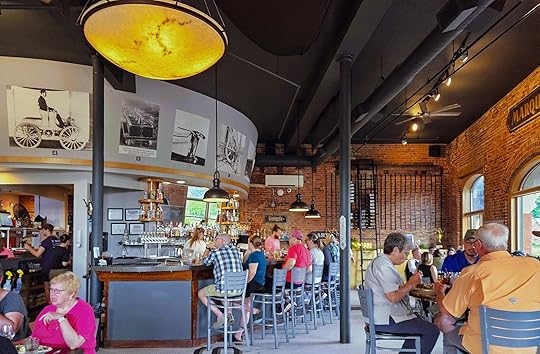
Photo: Craig Benson
With an ethos that belies the manufacturing and mining roots of the historic 150-plus-year-old building, Iron Bay’s website states, “Every day is Earth Day”. The restaurant, right on the waterfront with views of the Ore Dock, serves soups, salads, sandwiches, and burgers, all made with ingredients from local Upper Peninsula farms, and offers a wide variety of small-batch beers, notably from local breweries. The walls are covered in historical pictures, artifacts, and memorabilia, like a museum, and your server will bring you the key card on which you can read about the history of the building. Don’t forget to leave room for dessert. While I was there, I went to “Brownie Town,” as my server, Evan, called it.
Iron Bay Restaurant and Drinkery: 105 E Washington St, Marquette, MI 49855
Vierling Restaurant and Marquette Harbor BreweryView this post on InstagramA post shared by Vierling & Mqt. Harbor Brewery (@vierling_mqt_harbor_brewery)
The Vierling, like Iron Bay, is a lovingly restored old building with deep historical roots. Originally built in 1886 as a “gentleman’s saloon” and recently taken over by the head chef and brewer, it’s known for its seafood, Italian dishes, and craft beers brewed on site. I had the pesto tortellini, which was not only delicious but came in a generous portion.
The Vierling Restaurant: 119 South Front St, Marquette, MI 49855
Stucko’s Pub & GrillStucko’s is a sports bar’s sports bar with 14 flat screen TVs and a lively atmosphere. Named after the founders, Mike and Sonia Stucko, the spot has been voted as having the best burger in Marquette, and with, as they say, the “Funnest wait staff in Marquette.” The menu is high-end classic pub food, like burgers, nachos, and sandwiches, but there’s also less common pub fare like poutine, brussels sprouts salad, and a Friday fish fry. I enjoyed the Southwest salad.
Stucko’s Pub & Grill: 900 N 3rd St, Marquette, MI 49855
Babycakes Muffin CompanyVer esta publicación en InstagramUna publicación compartida por Babycakes Muffin Company (@babycakesmuffinco)
For coffee, baked goods, or a grab-and-go breakfast, try Babycakes Muffin Company, conveniently located downtown on West Washington Street. I picked up a Babycakes Meaty Breakfast Wrap to go as I rushed off to the Ore to Shore mountain bike race. It isn’t only take-out, though; Babycakes has a cute dining area where you can relax and watch the shoppers walk by on West Washington.
Babycakes Muffin Company: 223 W Washington St, Marquette, MI 49855
Kognisjon BryggeriView this post on InstagramA post shared by Kognisjon Bryggeri (@kognisjonbrews)
A brewpub and live music venue, Kognisjon Bryggeri (Cognition Brewery in Norwegian) serves 27 beers on tap and food provided by the Third Street Grill. I stopped in on a whim when I saw the sign announcing live music, and I ended up with one of the best root beer floats I’ve ever had.
Kognisjon Bryggeri: 1034 North 3rd St, Marquette, MI 49855
Where to stay in Marquette:Landmark Inn
View this post on InstagramA post shared by Landmark Inn (@landmarkinnmqt)
I stayed at the almost 100-year-old Landmark Inn on my recent visit to Marquette. The hotel is pet-friendly and conveniently located minutes from downtown restaurants and pubs, and the Lower Harbor Ore Dock is just down the hill. My room was on the sixth floor, giving me an expansive view out over the harbor and Lake Superior beyond. On the other end of the sixth floor is the Crow’s Nest, with the best view of any bar in town. Downstairs, the Northland Gastropub serves classic pub food and local beer on tap in an English pub atmosphere. On Sunday mornings, the gastropub has a Bloody Mary bar.
The hotel has hosted some notable guests in the past, including Amelia Earhart and Abbott and Costello. More recently, the Rolling Stones drank in the Northland pub on the way to their road manager’s funeral.
Landmark Inn: 230 North Front St, Marquette, MI 49855
Getting to and around Marquette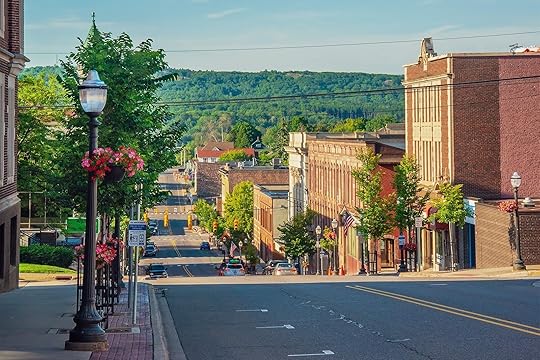
Photo: Gerald Bernard/Shutterstock
The easiest way to get to Marquette is to fly. The nearest major city, Green Bay, Wisconsin, is over three hours away by car. Coming from California, I flew to Marquette Sawyer Regional Airport after a stop in Minneapolis.
Marquette’s downtown area is very walkable. The docks, the main dining and shopping areas, the museums, and several of the hotel options are all within a mile or so of each other. Rideshare and taxis are options, and there’s public transportation within the city, but really, your best option if you’re going to spend any time exploring the surrounding area is a rental car. 
Your Bryce Canyon Country Adventures Start at These Luxe Glampgrounds
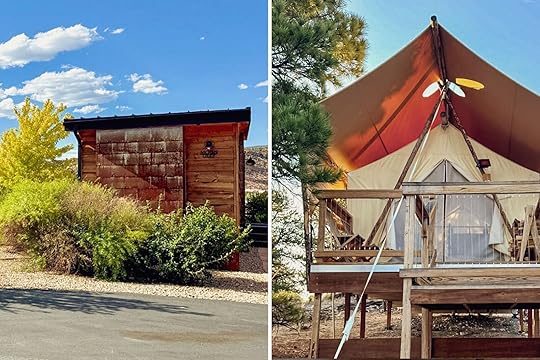
I’ve wanted to visit Bryce Canyon National Park for over a decade. Overshadowing its existence, however, are the ethereal landscapes found within Zion National Park, which happens to be the most visited of Utah’s “Mighty Five” national parks, attracting close to five million visitors annually. I’ve been there twice and plan to return at some point, but Bryce Canyon has remained in the back of my mind.
Recently, a friend of mine went on a national parks tour, and I found myself looking longingly at her social media posts, wishing that I, too, could be there. And then the opportunity came. When I was offered a spot on a hosted trip to two glampgrounds in Bryce Canyon Country, I couldn’t say no. So, I found myself on a bucket-list adventure, discovering a new-to-me national park while staying in rather luxurious accommodations.
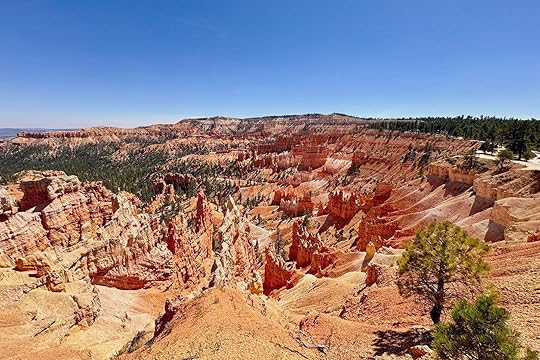
Photo: Melissa Mahoney
After spending four nights and five days in Bryce Canyon Country, I realized that it’s so much more than Bryce Canyon National Park. It’s also home to numerous charming small towns that people often drive right through without stopping, the 1.9-million-acre Grand Staircase Escalante National Monument that’s overseen by the Bureau of Land Management (BLM), and Escalante Petrified Forest State Park for an outdoor geological history lesson.
With so much unspoiled and protected land featuring natural wonders from hoodoos and badlands to cliffs and slot canyons, this region is ripe with adventure. And these two distinctly different glampgrounds make perfect base camps for exploring in Utah’s Bryce Canyon Country.
For tiny homes with big comfort: Escalante Escapes
Photo: Melissa Mahoney
After landing at Salt Lake City International Airport (SLC) and meeting my group, we embarked on a five-hour ride in a Sprinter van through Southwest Adventure Tours to the glamping destination where we’d spend the first two nights of our Bryce Canyon Country journey. As we traveled through Salt Lake City, commercial buildings and overpasses gave way to mountains and desert. While the journey was long, it was never boring, but by the time we arrived at Escalante Escapes, we were ready to settle in.
We pulled off the main road onto a dirt road that leads to a quiet parcel of land with mountain views and a few residential homes. On the property are nine tiny homes, which became our homes for the next two nights. A code was emailed for contactless check-in, and off we went to our separate accommodations at the adorable boutique glampground.
As I entered the space of my tiny home, named Moon Lily, I was struck by how roomy the 400-square-foot abode felt, most likely because of the high ceilings and how the space was used. The main room features a living room area with a pull-out couch, a TV, and a small yet fully equipped kitchen, complete with a full-sized fridge with a freezer, a dishwasher, and utensils, pots, and pans.
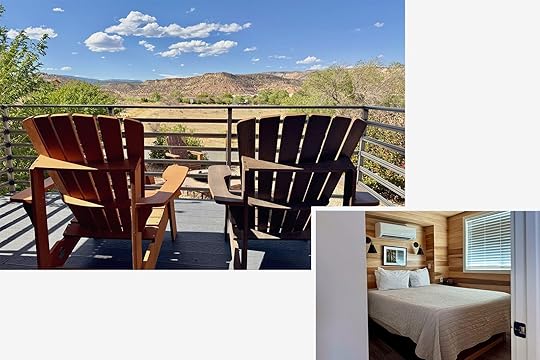
Photos: Melissa Mahoney
Off the open-concept kitchen and living room area was a tiny room with a set of bunk beds. Since it was just me, I set my carry-on suitcase on the bottom bunk to organize my clothing. A full bathroom featuring a shower, toilet, and sink was in the room next door. I also discovered a surprise luxury item that I rarely see in even the nicest hotels: a washer and dryer. It made me so happy to know that I could wash my clothing after the planned hike in the heat the following day. Finishing the tiny home tour at Escalante Escapes was the primary bedroom with a queen-sized bed (quite comfortable, I must say) and a flat-screen TV.
While there are no amenities to speak of aside from what’s in your tiny home, along with a small deck and personal fire pit just outside, that gives guests a chance to not be bothered by anything but the sounds of nature. There is strong WiFi, and the peaceful nature of the Escalante Escapes’ property can certainly help get you into a solid work flow, but you may choose instead to disconnect, make yourself a cup of tea, and take in the peaceful surroundings from the deck located through sliding doors off the living room.
Things to do near Escalante Escapes
Left: 4th West Pub. Right: Kiva Koffeehouse. Photos: Melissa Mahoney
A half-mile from Escalante Escapes is downtown Escalante, so it’s up to you to take a walk or a short drive to get to shopping and dining options. Dinner on our first night was at 4th West Pub, which has the only bar in town along Scenic Highway 12. Walking inside, there’s a small game room, dining areas, and, of course, the bar. We sat in a small dining room and ordered a variety of delicious appetizers, such as the garlic parmesan fries, the 4th West Loaded Nachos, and tortilla chips with queso blanco. For my main course, I opted for the California Street Tacos.
On our way to a guided hike at Escalante Petrified Forest State Park, we stopped for breakfast at Kiva Koffeehouse. Built into the side of a hill in Escalante in 1998 using natural materials, you’d barely know it was there along Scenic Byway 12 unless you were looking for it. Parking is on the roof of the building. From there, we descended a flight of stairs to the entrance while admiring the flowering gardens and mountain views along the way.
The inside is a blend of wood and stone and a rustic, almost historic feel with a kiva fireplace in the center of it all. (A kiva fireplace is a traditional Southwestern adobe-style fixture with rounded forms reflecting Pueblo and other Indigenous design influences.) A case displaying the day’s fresh-baked goods greeted us along with the friendly staff. As I sipped on the coffee I ordered, I reveled in the uniqueness of this place as I soaked in the mountain views from the large windows and checked out the art and wares for sale.
After coffee, we embarked on our hike in Escalante Petrified Forest State Park, which features a campground, the human-made Wide Hollow Reservoir for fishing and boating, a visitor center with displays and a gift shop, and several nature trails. What’s even more worthwhile to see here is the sheer amount of petrified wood found throughout the preserve.
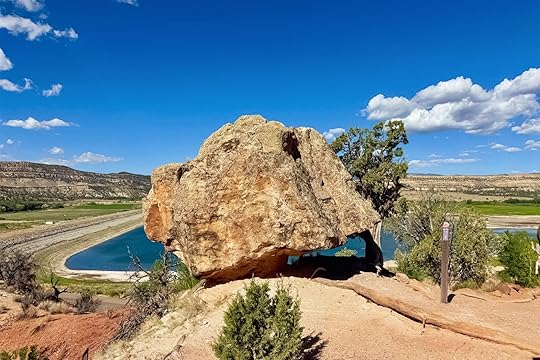
Escalante Petrified Forest State Park. Photo: Melissa Mahoney
My group was taken on a guided hike with Ranger Chad Jones, who probably knows this state park better than anyone. We started at a display featuring a 50-foot petrified tree, a rare find as its fully intact, and Jones gave us a history lesson before we trekked up a switchback trail to the top. At the top, we paused to take in the lovely panoramic views of the park’s lake and the town of Escalante. As we continued along, we began to see petrified wood scattered throughout the landscape, and it seemed to become more abundant the further along the trail we went.
We then came upon the whimsically named Sleeping Rainbow Trail, so named for the pieces of multi-colored petrified wood along the edge of the trail. Eventually, this trail led us to an overlook, and looking over the edge, we could see more pieces of petrified wood.
Hiking and other exploration are bound to keep appetites high while in Escalante. For a surefire lunch or dinner spot, look no further than Escalante Outfitters. In addition to being an outfitter that sells outdoor gear, offers adventure tours in the area, and has cabins and campsites for rent, Escalante Outfitters has an on-site restaurant with an incredible menu of gourmet pizzas, salads, and sandwiches (including vegetarian and gluten-free options). Just order from the counter, perhaps add one of the deliciously decadent bakery items from the case by the register, and have a seat either out on the patio or in the spacious dining room.
Book Escalante Escapes NowFor stargazing in style: Under Canvas Bryce Canyon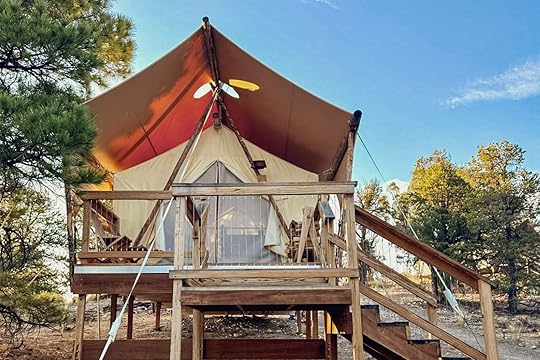
Photo: Melissa Mahoney
The last two nights of our Bryce Canyon Country tour brought us to a stay at Under Canvas Bryce Canyon, a well-known, everyone-wants-to-stay-here glamping resort. With Under Canvas as our new home base, we were now only 15 minutes from Bryce Canyon National Park, where further adventures awaited us. Not only is Under Canvas one of the best-known glamping brands in our country — with 14 locations throughout the US (four of which are in Utah) — but the Bryce Canyon location is a certified Dark Sky resort.
After checking in at the desk in the large main tent — which also houses the on-site restaurant, Embers, plus a dining room, coffee bar, and small gift shop — a staff member took us and our luggage to our tents via golf cart. Our driver stopped by each of our safari-style tents to give us the lay of the land, showed us how to tie back the canvas and allow air to flow through, and showed us how to use our in-tent wood stoves, which come in handy at night when the temperatures drop to 40-50 degrees Fahrenheit.
There are three tent types to reserve at Under Canvas Bryce Canyon: the Suite sleeps up to four people while the Hoodoo Suite can sleep up to six. I had the smallest option, the Stargazer, which can accommodate two. I still found it quite roomy with its queen-sized bed and split bathroom, with the toilet behind a wall on one side and the sink and shower on the other. There is a barn door to shut for privacy from the rest of the tent if needed.
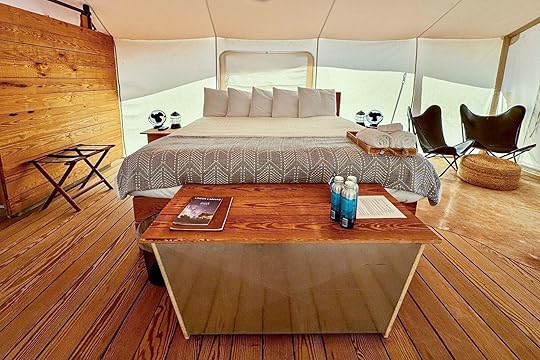
Photo: Melissa Mahoney
The most interesting thing about the shower is that you have to pull a lever for the water to flow. If you stop pulling the lever, the water flow will stop. Being hooked up to a propane tank outside, it took only seconds for the water to heat up each time I pulled the lever. On the shower walls are pumps of eco-friendly shampoo, conditioner, and body wash.
Dinner during our first night at Under Canvas was at Embers. We placed our order at the counter and sat at a table outside by the fire pits, watching as the sun dipped behind the mountains, and the air started to cool. Our friendly server, Kurt, left quite an impression on our group and was incredibly helpful with anything we needed. Delivered to our table was an abundance of dishes made with seasonal ingredients. From the falafel, grazing board, and fries to the burrata, roasted carrots, and marinated red beets, it was a feast for both the stomach and the eyes. I enjoyed the use of metal trays as though we were eating at a rustic campground. For dessert, we ordered the flourless chocolate torte, The Moon and Stars cheesecake, and the warm brown butter cake, which was the star of the show.
After dinner, we grabbed bags of complimentary s’mores kits by the front desk and roasted marshmallows as we talked about the trip. Once the sun had fully set, we started to see stars shimmering in the sky. As a certified Dark Sky resort, Under Canvas Bryce Canyon will host stargazing events for guests during the week. There was one scheduled for that night at 10 PM, but I couldn’t keep my eyes open, so I opted for bed.
Before heading to my safari tent, I stopped by the front desk for a hot water bottle to keep my bed warm at night. I decided not to light a fire in the wood stove, as I typically don’t like it too hot at night. However, I underestimated how cold I would be, and I woke up in the middle of the night shivering as I held onto the hot water bottle. I vowed to light a fire the next night.
As much as I enjoyed two nights at Under Canvas Bryce Canyon, there was no internet whatsoever and a very weak cell phone signal. While I understand the purpose of disconnecting and immersing yourself in nature, it was hard for me not to work for a couple of days as a remote worker. Everything else — from the accommodations to the staff, the food, and the natural surroundings — was well worth it.
Things to do near Under Canvas Bryce Canyon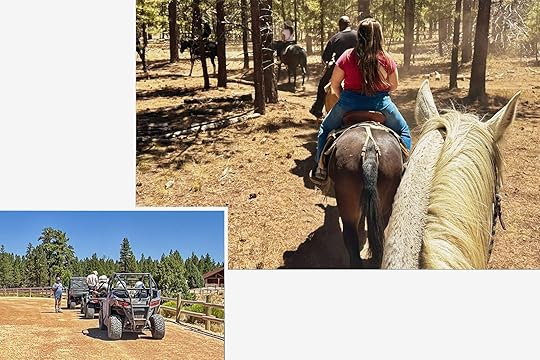
Right: Ruby’s Horseback Adventures. Left: Ruby’s ATV Tours. Photos: Melissa Mahoney
Because our home base was now only 15 minutes away from Bryce Canyon National Park and the gateway town of Bryce Canyon City, we had easy access to several activities. On our first full day, we took a 90-minute trail ride on horseback with Ruby’s Horseback Adventures, located right in downtown Bryce Canyon City. After saddling up, we were guided through Dixie National Forest to the rim of the Water Canyon Amphitheater with incredible views of hoodoos.
During our second full day near Bryce Canyon, we had two adventures planned, starting with a UTV tour through Ruby’s ATV Tours. We were given gaiters to wear over our mouths and noses, goggles, and helmets before boarding our UTVs. I opted to drive a Polaris RZR as I’d driven one before. Our guide took us on a fun yet somewhat wild ride along ATV trails, some of which intersected with the horseback riding trails from the previous day. It was exhilarating, and the steep hills we climbed or descended were among the most nerve-wracking (in the best way possible).
Our second excursion of the day was a self-guided e-bike tour with rentals through Bryce Canyon EZ Riders, located at the Bryce Canyon Airport. It was easy to get set up with our bikes and helmets (if we wanted them; I opted for no helmet). Across the street from the airport was the bike path that would lead us through Bryce Canyon City and, eventually, into Bryce Canyon National Park. The ride was picturesque, especially the closer we got to the national park. The bike path led right into the park, bypassing the pay booth to get in. We rode past the visitor center, through the parking lot, and picked up the park’s bike path, which wound its way to one of our only stops: Sunset Point.
There, we parked our e-bikes and walked up the hill to an overlook. Noticing another path leading up a hill, I walked toward it and discovered iconic views of Bryce Canyon National Park, a panorama of beige and orange sandstone with hoodoos reaching for the sky — exactly what I’d come there for. 
You Can Sip Limited-Edition Glenfiddich and Test Your F1 Reflexes at This NYC Pop-Up

New York City’s Grand Central will have a high-class whisky pit stop on September 23 and 24. Glenfiddich and Aston Martin F1 are rolling into Vanderbilt Hall with whisky pours, reflex tests, and a full-size race car.
The two brands are hosting a two-day public activation to mark the release of Glenfiddich’s new 16 Year Old single malt and celebrate the brands’ partnership, which began in 2024.
Open from 3 to 8 PM both days, the free event is open to anyone 21 or older with valid ID. Attendees can sample the new whisky (either neat or in cocktails) and test their reflexes on a Batak game modeled after F1 driver training. That’s one way to see first-hand why world-class spirits and world-class racing are best paired in a cultural, rather than literal, sense. A full-scale Aston Martin F1 replica car will also be on display.
The new Glenfiddich 16 Year Old is bottled at 43 percent ABV and sells at a reasonable $75. It’s aged entirely in American oak, a first for the distillery, using a mix of new barrels, ex-bourbon casks, and American oak wine casks. Glenfiddich’s malt master Brian Kinsman told Food and Wine that the goal was to showcase how a single wood type shapes flavor. Tasting notes include vanilla, toffee, caramelized ginger, and fresh fruit.
This is the second release tied to the Glenfiddich–Aston Martin collaboration. The first, a 65-year-old single malt from 1959, was released in late 2024 as a high-end exclusive at Harrods in London.
The Grand Central event will also include tastings at the Grand Brasserie and The Campbell, with Central Cellars offering complimentary bottle engravings with purchase of the 16 Year Old. 
September 18, 2025
Can a Hotel Make Travel Better for the Planet? This Seattle Boutique Thinks So

A good hotel embodies the aesthetic, the vibe, and the flavor of its location. Populus, a newly-opened boutique hotel in Seattle’s Pioneer Square, is a great hotel. Douglas fir native to the Pacific Northwest surrounds guests upon entering the lobby. Exposed brick and reclaimed wood accent deep, saturated colors, warm lighting, and plush textures throughout the public spaces, and cozy rooms are fit with curated artworks and windows overlooking one of Seattle’s most historic districts. What separates Populus from other localized boutiques, though, is that all this is simply topical – the core of its greatness lies in how the brand functions, and in how that ethos drives the guest experience.
I traveled in August to Seattle to report on Populus. The original assignment was to write a review based on my experience there, much like I’d attempted at the original Populus location in Denver. But as I learned in Colorado, the Populus experience is as much about how a traveler impacts their location as is about what they take away from it. Parent company Urban Villages and hospitality management brand Aparium stepped way out on a limb with the concept of a “carbon-positive” hotel. The mantra is embedded into everything here – from the kitchen at Salt Harvest to the solar farm on the hotel’s roof. As such, I feel that in order to honestly evaluate the property, a better way to approach writing about Populus would be to write about how the hotel fits values of environmental stewardship regarding its dining, design, and location.
Staying at Populus Seattle My king room was comfy, efficient, and powered by renewable energy. Photo: Tim Wenger
My king room was comfy, efficient, and powered by renewable energy. Photo: Tim Wenger I spent each morning of my stay working in the hotel's Library. Photo: Ric Stovall
I spent each morning of my stay working in the hotel's Library. Photo: Ric StovallFirst, though, the basics. Rooms at Populus start around $239 per night – not a cheap date. Many spends are removed by staying here, though. There’s no need for a car – arrive by transit, commute via that, foot, or micromobility. There’s no need to go offsite for coffee or workspace – I spent each morning on my laptop in the Library, sipping fresh (and free) joe while hammering out story edits. Breakfast is available at Salt Harvest (I loved the peanut-butter-stuffed Hong Kong French Toast and the acai bowl). The onsite cafe adjacent to Salt Harvest serves caffeinated drinks in the morning and converts into a cocktail lounge in time for happy hour.
Most rooms are small – standards king or double-queen rooms run under 300 square feet, Alder Double Queens and Cedar Corner Kings run between 300 and 350 square feet. That space is optimized with a workdesk, TV, mini-bar in the closet, and a window-side reading seat. Books on local flora and fauna sit on the side table. Travelers can go larger with suites up to 1,050 square feet. Bathrooms feature zero-waste Aesop toiletries and rain showers, with Pendleton blankets on the bed.
Connecting guests to the community
Photo: Ric Stovall
Matador Network believes that at its best, travel is an unequivocal force for good in the world. That venturing beyond one’s backyard opens minds, increases empathy, and brings humanity closer together, therefore changing the place as positively as it changes the person. Populus embodies this in many ways, most visibly through its Pacific Northwest-inspired design and extensive collection of localized art. Once I moved past the douglas fir in the lobby, the next thing I noticed at Populus Seattle were the large works of art that adorned the lobby and Salt Harvest restaurant. The hotel’s art program is shaped by ARTXIV, a curatorial house led by Dominic Nieri that treats the hotel as both gallery and residency.
More than 300 works by about 35 artists—most based in the Pacific Northwest and many from local Indigenous communities—were commissioned for the property. A 2024 residency program brought artists to work in a building adjacent to Populus currently being remodeled by Urban Villages that will soon house not just artist studios but coworking, a business incubator, and event space. The residency aimed to help artists produce pieces directly inspired by the site and its surroundings. The collection is intentionally dynamic: all of it is available for purchase, and as works sell, they are replaced with new commissions, ensuring the art remains a living, evolving presence within the hotel. My room, and all rooms onsite, feature one such piece of art. Thematically, the pieces highlight the ecology and culture of the region. Exhibitions like Populus: Origins reveal the creative process behind the hotel’s identity, showing sketches and developmental works alongside finished art.
Regenerative dining — and travel as a force for good Local salmon, local veggies. Photo: Tim Wenger
Local salmon, local veggies. Photo: Tim Wenger There's peanut butter in there. Photo: Tim Wenger
There's peanut butter in there. Photo: Tim Wenger The acai bowl was a perfect day-starter. Photo: Tim Wenger
The acai bowl was a perfect day-starter. Photo: Tim WengerPopulus also embodies regenerative travel through its mantra of environmental stewardship. This stewardship is readily apparent in the kitchen at Salt Harvest, the hotel’s seasonally driven, Pacific Northwest–inspired restaurant. As much as possible, ingredients are sourced from regenerative farms, fisheries, and ranches. The menu changes with the seasons – with a focus on local seafood and veggies – and emphasizes elemental cooking techniques like open flame, hearth, and smoke. Pickling and canning help the restaurant stay regenerative through the year.
We dined one evening at Chef Conny Andersson’s Chef’s Table, a test concept the kitchen is honing that allows diners to eat right in front of where their food is being prepared. It’s asinine to think that society has reached a point where pairing local fish and veggies elicits reactions along the lines of, “I never thought this could be so good!” Yet that refrain best described my view of the meal. King Salmon paired perfectly with creamed corn and leeks, duck breast raised up the street at Little Farm by the Sea accented a chutney made with regional fruits. The chef offers an extensive veggie-driven menu as well, built around foraged mushrooms and locally-grown veggies that – thanks to the regenerative sourcing – have a positive environmental impact, a true rarity in restaurant dining.
Rooftop cocktail bar Firn brings the same ethos to its drinks menu. I became particularly fond of the Casual Crush mezcal cocktail. At both establishments, all food waste at onsite restaurants Salt Harvest and Firn is deposed in an onsite biodigester that turns the scraps into compost that is then delivered back to local farms.
Populus Seattle embodies ‘smart urbanism’
The deck at Firn overlooks the downtown Seattle skyline. Photo: Ric Stovall
“The best way to protect nature is to help people experience it,” Urban Villages CEO Jon Buerge, told our group of journalists during a tour of the property. “Climate change, at its most basic level, is about a disconnect from nature.”
The adaptive reuse of the 1907 Westland building preserves Douglas-fir beams, exposed brick, and historic decking, blending history with natural textures to reduce embodied carbon. A central skylight and “Sky Court” flood the interiors with daylight, while living installations like the six-story “Moss Foss” wall and the “G Forest” of fallen cedar and yew logs bring the feel of a rainforest indoors. Native plants and pollinator-friendly species fill the rooftop and solarium, providing habitats for butterflies, hummingbirds, and bees, while also offering guests a sensory experience of greenery, light, and open air. I heard tell of a frog inhabiting the greenery area in the hotel’s entrance – though I’m rather certain I caught Dom Neiri, the hotel’s art curator, in a bluff on the topic when asked how the frog actually thrives there.
Frog or no frog, the design beyond its aesthetics embodies the ethos of positive adaptive reuse: the hotel runs on renewable electricity, sequesters more carbon than it emits, composts food waste, and plants a tree for every night’s stay. The focus on local ecology—using species native to the Pacific Northwest and incorporating art inspired by regional landscapes—isn’t just a bow tied around an empty box. The result is a distinctive balance of history, place, and nature. Urban Villages calculated that it emitted 7,000 tons of carbon constructing its Denver hotel, and sequestered 10,000 tons. Here, the initial pollution was less because the building already existed.
Pioneer Square is just south of downtown Seattle and has a stop on the Sound Transit Link train system that heads out to Seattle-Tacoma International Airport. Renting a car is a waste of money and time here, because the hotel intentionally shuns dedicated parking – and everything is walkable, anyway. Shortly after arriving I walked up to a meeting at Reuben’s Brews, less than a mile from the hotel, and passed no less than two dozen restaurants and at least as many coffee shops. Another night we walked a few blocks to a concert at WAMU Theatre, adjacent to Lumen Field and TMobile Park, where the Seahawks and Mariners play. Most everywhere I went, in fact, I walked or took transit, with a couple Ubers mixed in when we headed to kayak at Alki Beach or to dinner at Willmott’s Ghost on the other side of downtown.

Do you see a frog in the entryway? Photo: Ric Stovall
The adaptive reuse, renewable energy, and walkability of Populus Seattle perfectly embody my values. Buerge worded it better than myself, however, by saying, “It’s often thought that environmentalism is a redactive process. That shouldn’t be the case. It’s about environmentalism actually making things better.”
Throughout our stay I heard Buerge and his colleagues repeatedly discuss the idea of future Populus locations – the next one perhaps, they suggested, being in a place more immediately vulnerable to the impacts of climate change than Seattle or Denver. The hope would be to kickstart or further resiliency efforts there, while bringing the community and its visitors together towards this important mission.
“As we think about growing the Populus family of hotels, the goal is to stay true to the commitments of our brand and the authenticity of that community,” Buerge says.
Populus is one in a long line of boutique hotel brands seeking to “redefine urban lodging.” The differentiator where Urban Villages really innovates is in bridging the separation between people and place – in a world that increasingly needs it, Populus guests can leave knowing they benefitted the place they visited. 
September 17, 2025
29 Hours, 12,200 Miles: the New Longest Direct Flight in the World

The commercial aviation industry has come a long way since the introduction of jet passenger service in the 1950s, and in 2025, it’s hitting another milestone: there’s about to be a new longest direct flight in the world.
The flight was first announced in June 2025, when China Eastern and Auckland Airport signed an agreement in Shanghai, which was covered by official news sources at the time. It hadn’t yet been approved by regulatory agencies, and no flight time was given, though news coverage did note that it would significantly shorten travel time by creating a more direct route.
Now, China Eastern has opened the flight for booking, and one thing is clear: travelers should be sure to pack a phone charger, because at 29 hours, the route is about to become the longest direct flight in the world.

Photo: Matador Network
The new route will begin flying on December 4, 2025, connecting Shanghai, China, to Buenos Aires, Argentina. It will be the first direct air link between China and Argentina, and the only nonstop option between Shanghai and any South American destination. While it will be the longest direct flight in the world, it’s not the longest nonstop flight in the world, as it makes a two-hour stopover in Auckland, New Zealand. It qualifies as “direct” because passengers remain onboard the same Boeing 777-300ER under a single flight number, and aren’t able to exit the plane in Auckland.
While the trip from Buenos Aires to Shanghai is a bit shorter due to predictable tailwinds, at just over 25 hours, the trip to Buenos Aires will cover roughly 12,200 miles during a 29-hour trip. It surpasses Air China’s Beijing, China to São Paulo, Brazil service (with a stop in Madrid, Spain), as the world’s longest direct flight. Singapore Airlines’ nonstop New York-to-Singapore service still holds the record for the longest nonstop route in the world, at about 19 hours.

The new route will be flown on Boeing 777s. Photo: MihailC95/Shutterstock
Before this flight, travelers moving between the two cities would have to make time-consuming connections in Europe or North America. Even at 29 hours, the new flight will cut at least five hours off the fastest itineraries currently available. While it’s flyers who will appreciate the saved hours, the route is also expected to be used for imports and exports, as China is a huge importer of Argentinian beef and soy.

Having a proper sleep plan will be key to feeling rested when you land, especially at China Eastern doesn’t provide many sleep- or comfort-related amenities in Economy class. Photo: Matej Kastelic/Shutterstock
The new route will be the quickest between the two cities, but spending nearly 30 hours on board a single aircraft, even with a short break in Auckland, is still bound to be stressful. Flying in Business Class will likely make it slightly more bearable, but premium class seats are expected to start around at least $5,000, as opposed to about $1,500 in Economy.
The route will be flown on a Boeing 777-300ER, which seats 316 travelers. It’ll be essential to manage hydration, blood flow, and jet lag on board, especially given the 11-hour time difference between the two cities. Travelers flying to Shanghai will depart in the evening and arrive two calendar days later, effectively losing a day. Flyers headed to Buenos Aires will “gain” half a day. While this maximizes your time in the destination, it can be hard to stay awake into the evening, especially if you’ve not slept on the flight. As of now, China Eastern doesn’t have any on-board amenities available to all passengers to help with the jet lag, akin to the “wellness stations” offered by airlines like Qantas.

Travelers headed to Buenos Aires should try to stay awake for the rest of the day after landing. Photo: Mariano Colombotto/Shutterstock
If you’re headed to Buenos Aires (the longer way), try to stay awake for the first few hours, then get six or seven hours of sleep that line up with nighttime in Shanghai. After the Auckland stop, stay awake for a while, then aim for another four or five hours of rest during Buenos Aires’ early morning. You’ll land in the early afternoon local time. Resist the urge to nap until evening to help your body clock adjust.
If you’re flying to Shanghai (the shorter direction), try to sleep soon after takeoff and wake up around what would be morning in Shanghai. Stay awake as much as possible for the rest of the journey (a short nap before landing is fine), then push through until nighttime in Shanghai to reset more quickly. Websites like Sleepopolis or Phyllola or apps like TimeShifter can help you plan more detailed sleep schedules to beat jet lag as much as possible.

A rendering of the First Class suites on Qantas’ new “Project Sunrise” flights. Photo: Qantas
The China Eastern flight is extra-long because of the stopover in Auckland. When it comes to nonstop flights, the longest theoretical flight in the world (though it’s not currently possible with today’s planes) would be something like Auckland, New Zealand, to Seville, Spain; or Madrid, Spain, to Wellington, New Zealand. At 560 miles per hour (about the typical speed of today’s large planes), each of those routes would take just over 22 hours, beating the current Singapore Airlines record.
While those routes aren’t possible (yet), Qantas did announce in May 2022 that it was reviving plans for “Project Sunrise:” nonstop long-haul flights between Sydney and far-flung locations like New York and London. It’ll be flown on planes modified to have a higher fuel capacity, with routes taking an estimated 20-22 hours. Those flights are expected to launch in early-to-mid 2027, with Qantas planning to dedicate about 40 percent of the 238 seats on board to First, Business, and Premium Economy. 
Stay Like Bad Bunny or Sinatra at This Iconic Luxury Resort in Puerto Rico

Arriving at the Fairmont El San Juan Hotel, a sunswept resort on Puerto Rico’s northern coast, I immediately knew that I was somewhere special. Just inside the front door, a dazzling 7,000-piece crystal chandelier hung above a sunken bar where bowtie-clad bartenders crafted tropical cocktails, recreating the aura of a more refined era of luxury.
Since this storied resort first opened its doors in 1958, it’s always been one of the chicest destinations in the Caribbean. Over the years, superstars from Frank Sinatra to Jennifer Lopez to Bad Bunny have performed at the nightclub, Brava, and the resort has hosted countless famous faces in its luxe guest rooms and butler-serviced private villas.
I’m no celebrity, but throughout my stay, I felt just as important as the highest-profile guest. Every staff member I interacted with seemed intent on making me feel like a VIP from check-in to check-out. As soon as I entered the lobby, I was greeted with a welcome cocktail made with fresh hibiscus, Puerto Rico’s national flower, and escorted to my room by a cheerful hotel representative who pointed out the property’s highlights on the way. I was awed by the 300-year-old Banyan tree with its massive cascading roots, and I made a mental note to check the yoga schedule at the three-story, state-of-the-art fitness center.

Photo: Amy Gordon
As my guide left me to get settled, she handed me a wooden keycard, a tangible expression of the hotel’s commitment to eco-consciousness and sustainability. Additional touches like paper straws, refillable toiletries, water-bottle-filling stations, and biodegradable to-go utensils made me feel confident that I was staying somewhere that values our environment as much as I do.
With 13 food and beverage outlets on the property, the hardest part of my day was deciding where to eat. I began each morning by indulging in the massive buffet packed with fresh pastries, eggs, meats and cheeses, cookies, fruit, and a seemingly endless array of quesitos (cream-cheese-filled pastries), besitos de coco (a Puerto Rican take on coconut macaroons), and other local favorites. On my Uber driver’s recommendation, I stopped into Candy Shoppe, where the clerk served up rich Belgian chocolate and hot Puerto Rican coffee. For lunch, I opted to dine poolside on sandwiches and snacks at the El San Juan Beach Club as I took a break from the sun in a private cabana.

Photo: Amy Gordon
Four distinctive pools dot the 388-room property, each with its own vibe and amenities, whether that’s tranquil fountains or swim-up bars. My favorite touch was the server walking around with a pushcart full of fruity popsicles, the perfect mid-afternoon refresher. If you’re more of a beach bum than a pool patron, just walk through a gate and you’re a few sandy steps from the Atlantic Ocean.
While Fairmont El San Juan Hotel feels like a private oasis, it sits just five minutes from San Juan International Airport (SJU) and 20 minutes from picture-perfect Old San Juan, a must-visit on any trip to Puerto Rico. After spending the morning walking the blue cobblestone streets and touring historic landmarks like El Morro and the Puerta de San Juan gate, I returned to the hotel ready to relax with a deep-tissue massage. I checked in for my afternoon appointment at the penthouse Well & Being Spa, and I strolled out an hour later refreshed, relaxed, and excited for an unforgettable evening.

Photo: Amy Gordon
Dinner at Fairmont El San Juan Hotel is a treat no matter which outlet you choose, from exquisite omakase at Sushi by Bou, to cocktails and steaks at Meat Market, to modern interpretations of traditional Puerto Rican fare at Caña. I chatted with Caña’s James Beard-recognized Chef Jose Enrique, who shared stories about growing up nearby and sneaking into the hotel to see the famous musicians that came through regularly. Listening to his nostalgic trip down memory lane, I felt the hotel’s significance not just to the island but to its people.
On Thursday, Friday, and Saturday nights at Fairmont El San Juan Hotel, after dinner is when the real action begins. The lobby becomes a destination for unforgettable, locally inspired entertainment and interactive experiences. While I was on property, there was an invite-only fashion show, a vibrant salsa band wowing the crowd at Chico Cabaret, gamers and gamblers living it up in the attached Foxwoods Casino, and a lobby full of glamorous locals and worldly guests. My favorite evening activity, however, was the Cultural Canvas Series, where I not only got to showcase my (very limited) painting skills and artistic flair but also meet a local artist from Puerto Rico’s thriving creative community.

Photo: Amy Gordon
Back in my guest room, I ended the night on my beachfront balcony listening to the sounds of nature around me. The waves crashed against the shore, the wind rustled the palm fronds, and the coqui frogs sang lullabies to each other. As I nibbled on the chocolate truffles I’d bought earlier, I reflected on the wide variety of experiences that I’d had during my stay, from kicking back at the pool and melting into the massage table to delicious meals and high-energy nightlife. While I was melancholy that my time at Fairmont El San Juan Hotel was ending in just a few hours, I felt grateful to have been a small part of a long-lasting legacy that means so much to so many. 
Matador Network's Blog
- Matador Network's profile
- 6 followers



